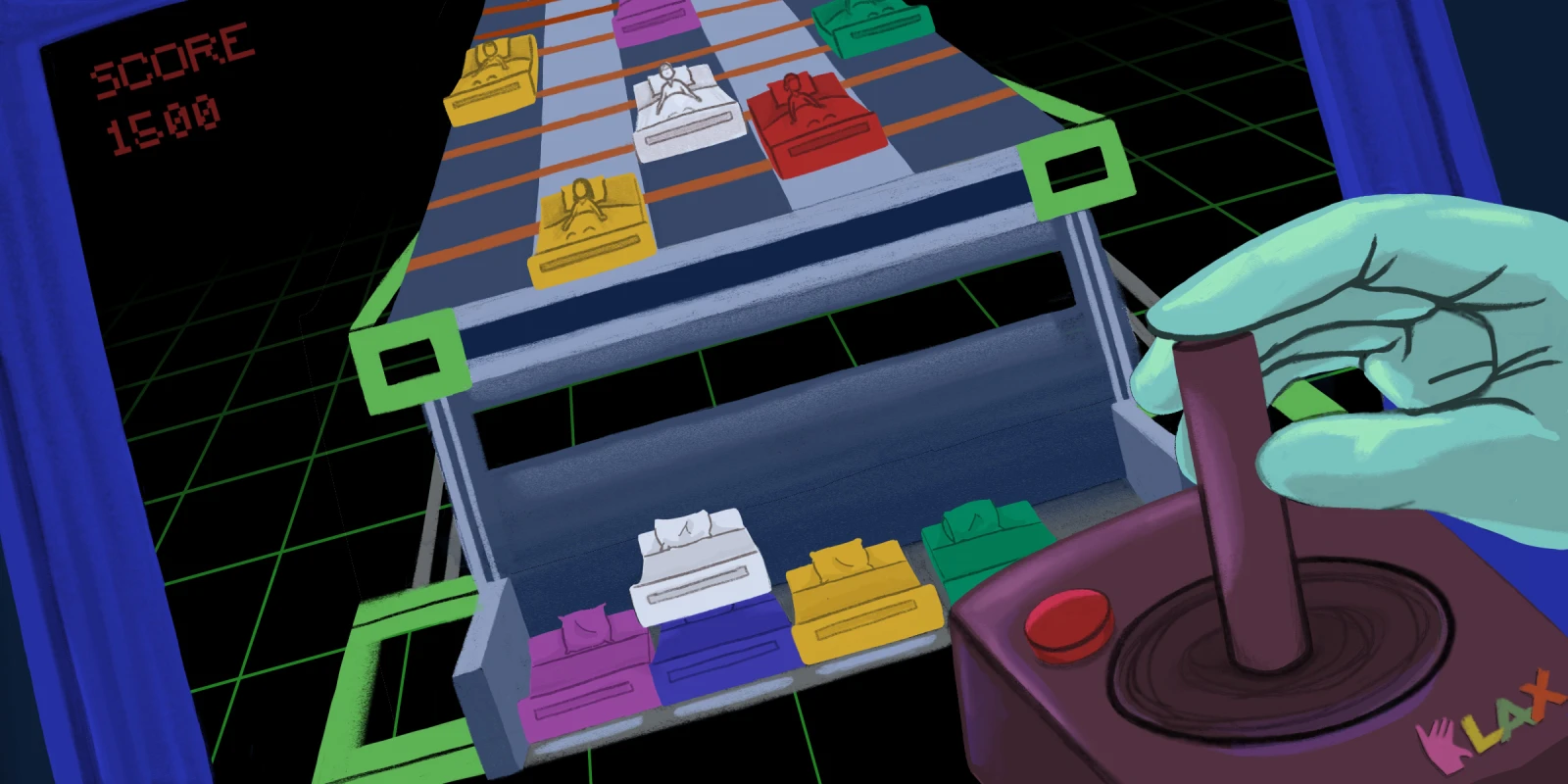I'm not sure how Klax made its way into my home. Given my parents and their general vibe, it was probably because it was "like Tetris, but cheaper." Essentially that's what the game is, although the differences with Tetris are the key features for the ED. Basically Klax is a place-falling-things-in-order game. The concept is simple: catch tiles and place them onto the board to make patterns and clear rows of tiles. If you fail, you lose.
A well run ED shift is very similar to a puzzle game. It involves moving pieces around on a surface and arranging them so they fit together in a specific order with a specific function. The difference is that on an ED shift you're dealing with living humans, who have thoughts and feelings about what is happening to them. And just like humans, Klax tiles also scream when they fall off the board without being addressed.
What makes Klax a unique game experience is what makes it a perfect metaphor for understanding workflows in the ED. In addition to the basic catch-and-drop move, you have one more option in dealing with the falling tiles: You can throw a tile back onto the game board and deal with it later. This seemingly small ability quickly becomes the defining feature of a game of Klax as you struggle to achieve the goal of clearing the tiles, while also maximizing your score. Much like working in the ED, Klax is a game of managing time as much as it is a game about managing tiles.
Like most games, Klax has different “modes” of play. You can just make as many lines as possible, while the tiles come faster and faster until you eventually can’t keep up. Alternatively, there are modes where you have to create crosses, or a certain number of vertical or horizontal lines. For each different mode, you have to adjust your strategy for the current board and the current series of tiles moving toward you. If you prefer to keep an orderly rack of tiles on one side of the play area and a “discard pile" to the side, you might find that works well for the early part of the game, but not for later when you need all that space. If you keep with a strategy that worked earlier in the game, but is obviously failing the current situation, then you’re going to kill some tiles (or people) and the game will quickly get out of hand.
So to play a good game of Klax, you have to have a plan, but adapt for the situation. Sound familiar? As ED clinicians we all have our own preferred mode of work, but different departments and different days call for different strategies. A full workup might be reasonable for a young person with chest pain at 8 a.m. when the department is empty, but if you’re managing two ICU holds and are down three nurses, that 30-year-old with no risk factors is getting an ECG, a chest X-ray, and a discharge.
Another thing to remember is to take your wins where you can. You might want to hold on to that “wild card” tile for the big X you’re trying to make, but if there’s 10 tiles bearing down on you and they’re all different and you need every space on your paddle, you might need to use it to clear some space. Don’t look a gift hospitalist in the mouth if they’re trolling the department for an easy admit. If someone’s on the fence as to admit or discharge, it’s much easier to push someone off the fence into a hospital bed than it is to manage their outpatient follow-up while placing a central line.
Emergency medicine is a factory that produces one thing: decisions. Sometimes those decisions need to be made immediately, and sometimes not. However, it’s not what decisions you make that separates a truly great clinician from the mediocre and the awful — it’s when you make them. Deal with those tiles as soon as you can, and make them disappear. There will always be more tiles coming down the line, but the faster you make the easy decisions, the more time you have to make the harder ones. When easy decisions aren’t forthcoming, you can and should toss tiles back onto the play surface. One of the great gifts of the ED is that we can have the room until we don’t need the room. In an outpatient office, there’s always another appointment right after this one. In the ED, sometimes diseases (and people) need a few hours to declare themselves. Make decisions exactly when they need to be made — not before and definitely not after!
Despite it being a low-rent Tetris clone, Klax is actually a really fun game and has lots to teach us about what does and doesn’t work in the ED. So toss some tiles, and watch out for those screams!
What lessons have you learned from games that help you in medicine? Share in the comments.
Dr. Ryan Richman is an emergency medicine doc in upstate NY. Father of three, married to a pediatrician, and holder of several patents, he's an amateur baker and semi-professional Star Trek scholar. Also, anything with Matt Berry. If people still tweet (or X-plain?) he's @RWHRichman. Dr. Richman is a 2023–2024 Doximity Op-Med Fellow.
Illustration by Diana Connolly







